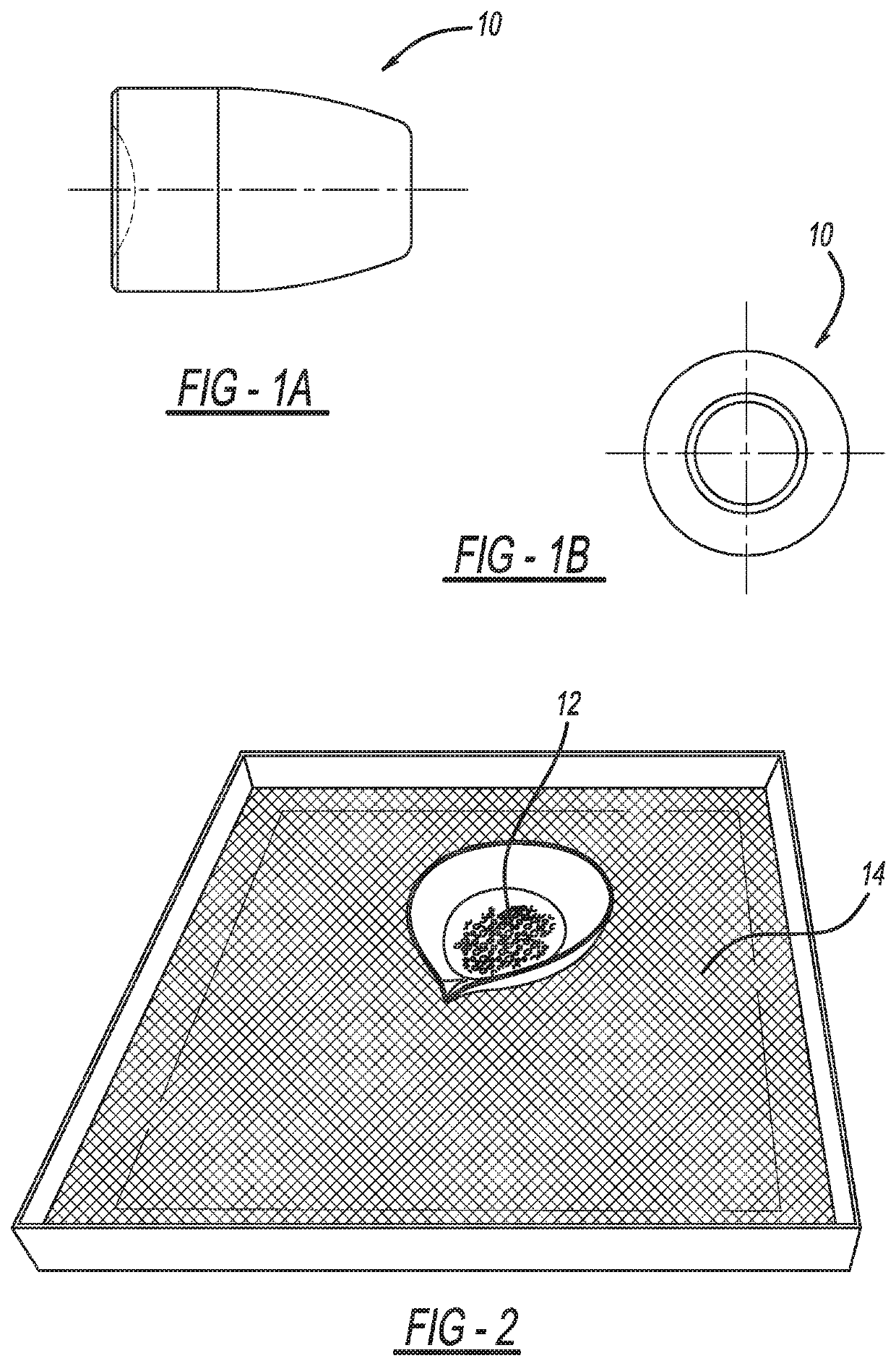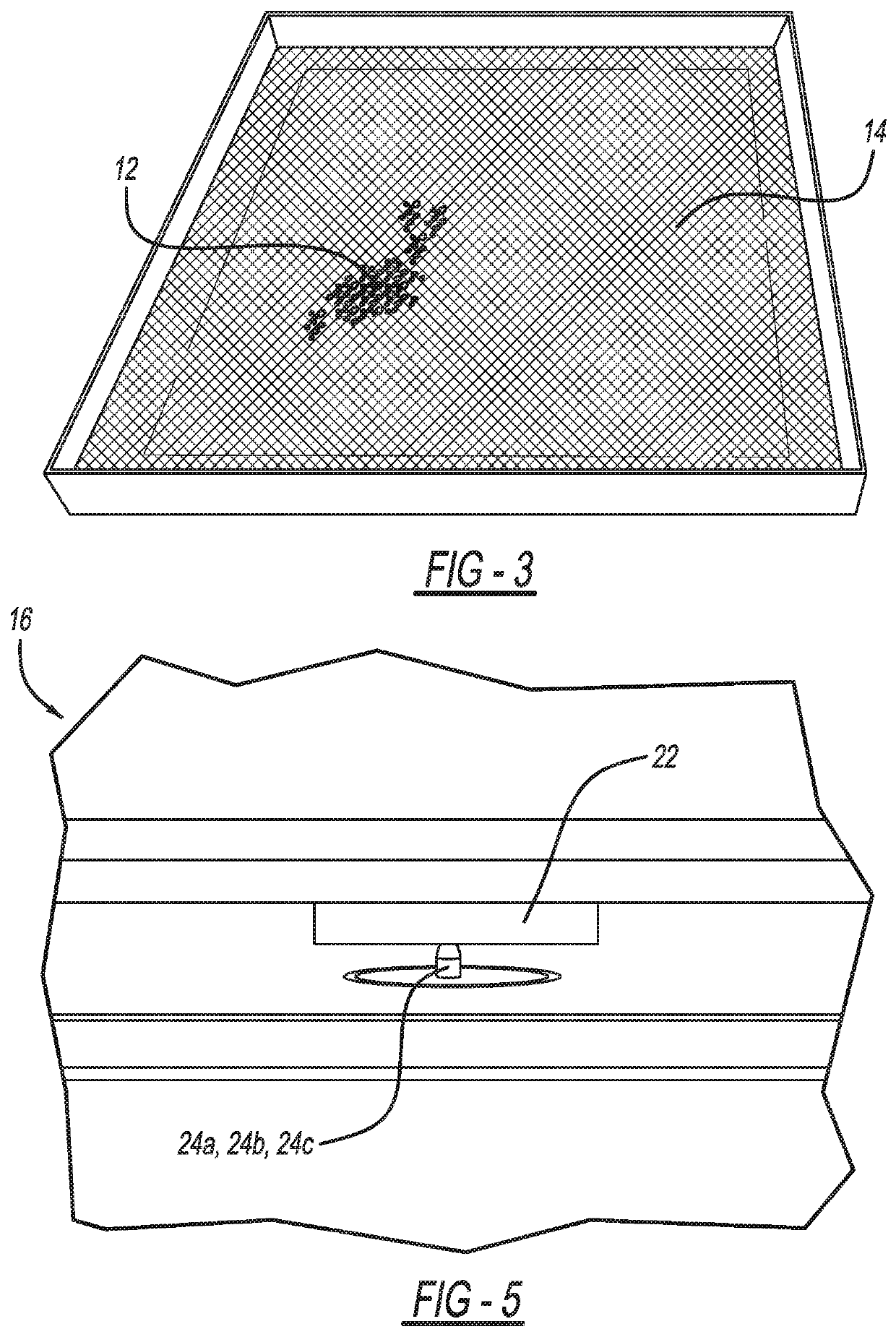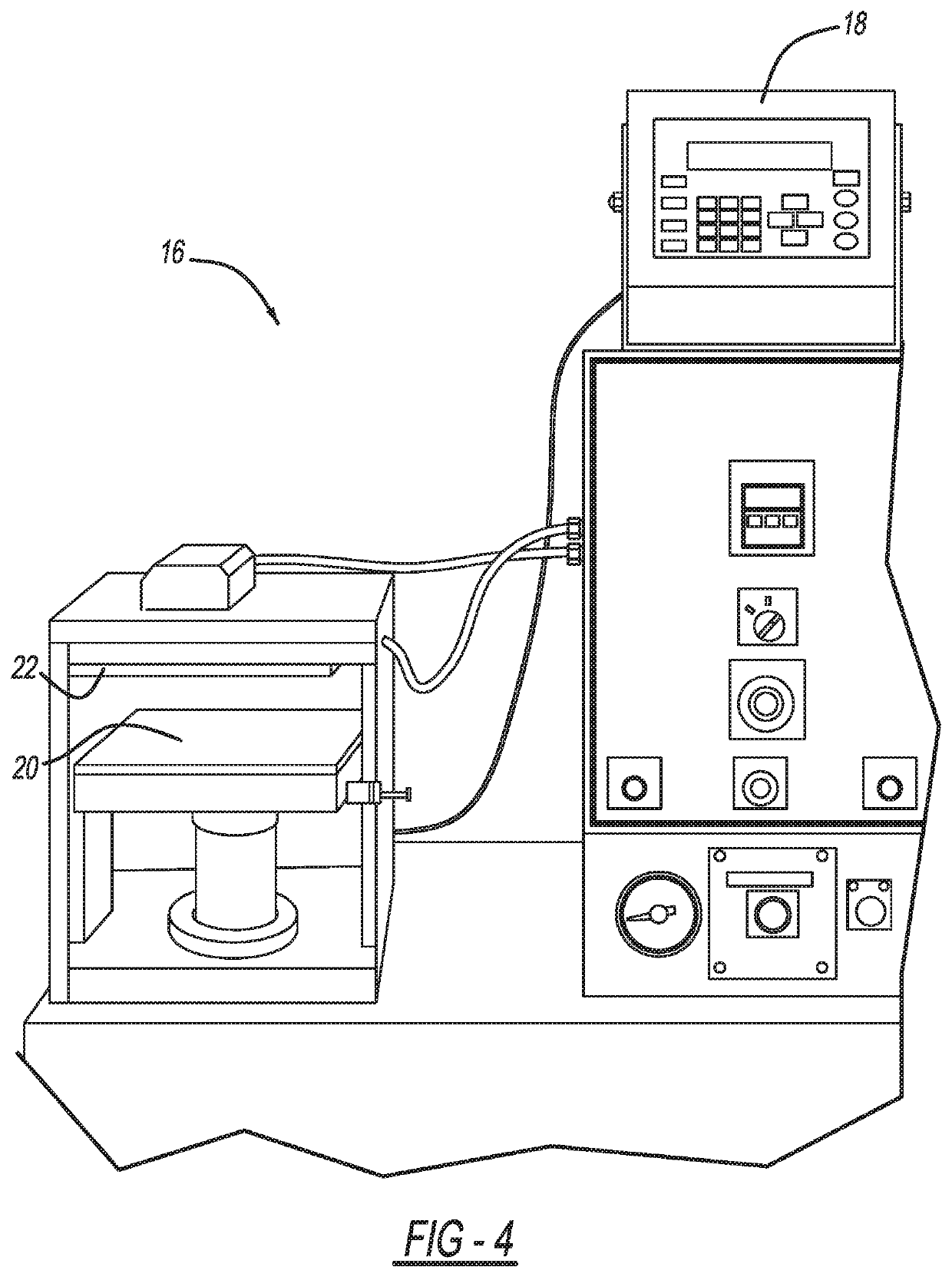Lead free frangible iron bullets
a technology of iron bullets and free lead, applied in the field of ranged firearm projectiles, can solve the problems of increased lead fume and lead dust pollution, extreme health risks of shooters, and residue accumulation, and achieve the effects of easy fragmentation, increased frangibility, and simple low-cost process
- Summary
- Abstract
- Description
- Claims
- Application Information
AI Technical Summary
Benefits of technology
Problems solved by technology
Method used
Image
Examples
example 1
[0034]One grade of iron powder produced by Hoeganaes Corporation was blended with die lubricant, assigned these numbers:[0035]1) 96.35% iron with 2.90% FE 3 P 16% and 0.75% zinc stearate (lubricant)[0036]2) The base iron material is trademarked under Hoeganaes Corporations name Anchorsteel 1000C
[0037]About a 90 grain sample of the powder blend was pressed (molded) in a die to make the 9 mm projectiles. Projectile size was approximately 9 mm (0.354 inches) diameter×13.5 mm (0.53 inches) long. The bullets were sintered in a belt furnace in a 100% nitrogen atmosphere. Density of bullets was determined using the water immersion technique. Bullets were then resin impregnated and coated with zinc phosphate per MIL-DTL-16232G Class Z Type 2. Other normal plating processes can be used at this point to alter the appearance / color of the bullet. This is followed with a coating or plating using either copper in accordance with ASTM B734-97 Class 5 or coated with manganese phosphate or zinc phos...
example 2
[0050]Additional test firing of bullets made to the same material composition and loading techniques as pre example 1 were conducted. Except in this case the projectiles were copper plated instead of the zinc phosphate coating.
[0051]a) A single test round with the copper plating fragmented as follows:
[0052]Total weight prior to screening=5.54 grams
[0053]Screen powder (or small particles) passing through the 14 mesh screen=1.64 grams (30%)
[0054]Fragments not passing through the 14 mesh screen=3.90 grams (70%)
[0055]The largest fragment size was approximately 0.19×0.18×0.16 inches and weighed no more than 0.55 grams (10%).
example 3
[0056]Additional test firing of bullets made to the same material composition and loading techniques as per example 1 were conducted. Except in this case the projectiles were molded to a longer length of 15 mm (0.59 inches) and were a slightly higher in weight as noted below. Additionally the parts were plated using a standard zinc plating process to 0.0025 inch plating thickness.
[0057]a) A single test round with the zinc plating fragmented as follows: Total weight prior to screening=5.67 grams
[0058]Screened powder (or small particles) passing through the 14 mesh screen=4.18 grams (74%)
[0059]Fragments not passing through the 14 mesh screen=1.48 grams (26%)
[0060]The largest fragment size was approximately 0.25×0.20×0.18 inches and weighed no more than 0.28 grams (5%).
[0061]b) A second test of the bullets from example 3 was completed using 10 rounds and the combined weights were recorded.
[0062]Total 10 round weight prior to screening=51.95 grams
[0063]Screened powder (or small particle...
PUM
| Property | Measurement | Unit |
|---|---|---|
| temperature | aaaaa | aaaaa |
| density | aaaaa | aaaaa |
| density | aaaaa | aaaaa |
Abstract
Description
Claims
Application Information
 Login to View More
Login to View More - R&D
- Intellectual Property
- Life Sciences
- Materials
- Tech Scout
- Unparalleled Data Quality
- Higher Quality Content
- 60% Fewer Hallucinations
Browse by: Latest US Patents, China's latest patents, Technical Efficacy Thesaurus, Application Domain, Technology Topic, Popular Technical Reports.
© 2025 PatSnap. All rights reserved.Legal|Privacy policy|Modern Slavery Act Transparency Statement|Sitemap|About US| Contact US: help@patsnap.com



